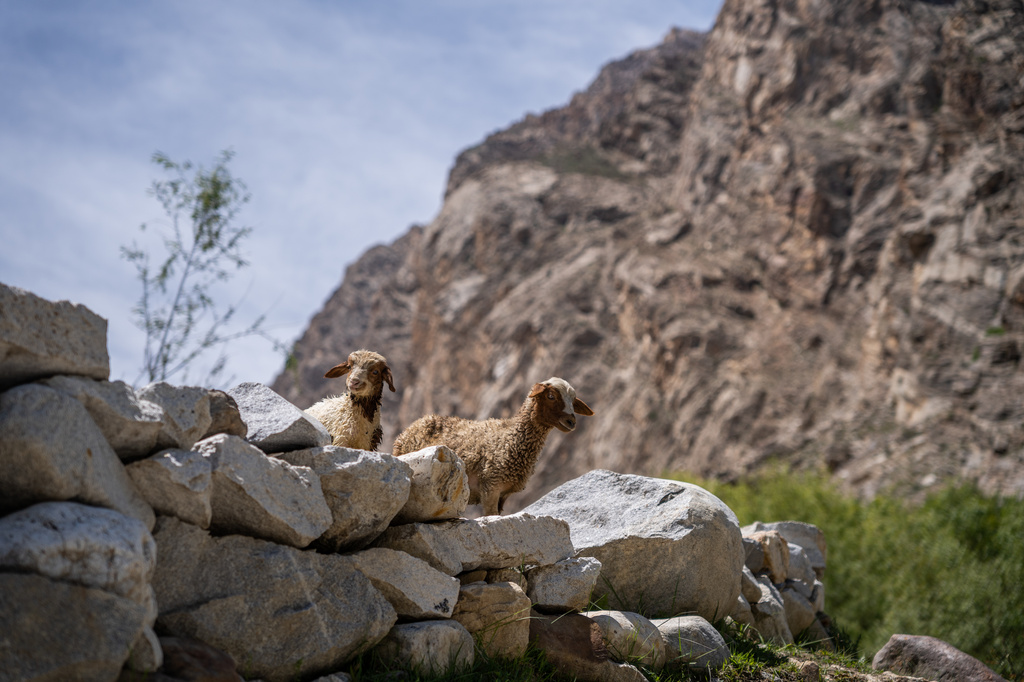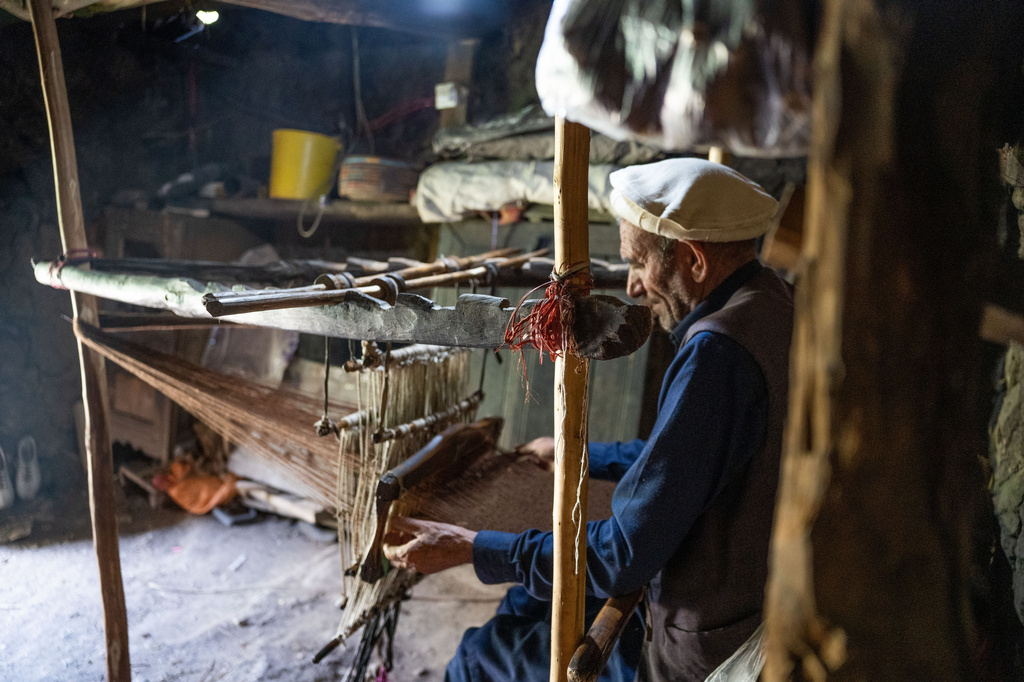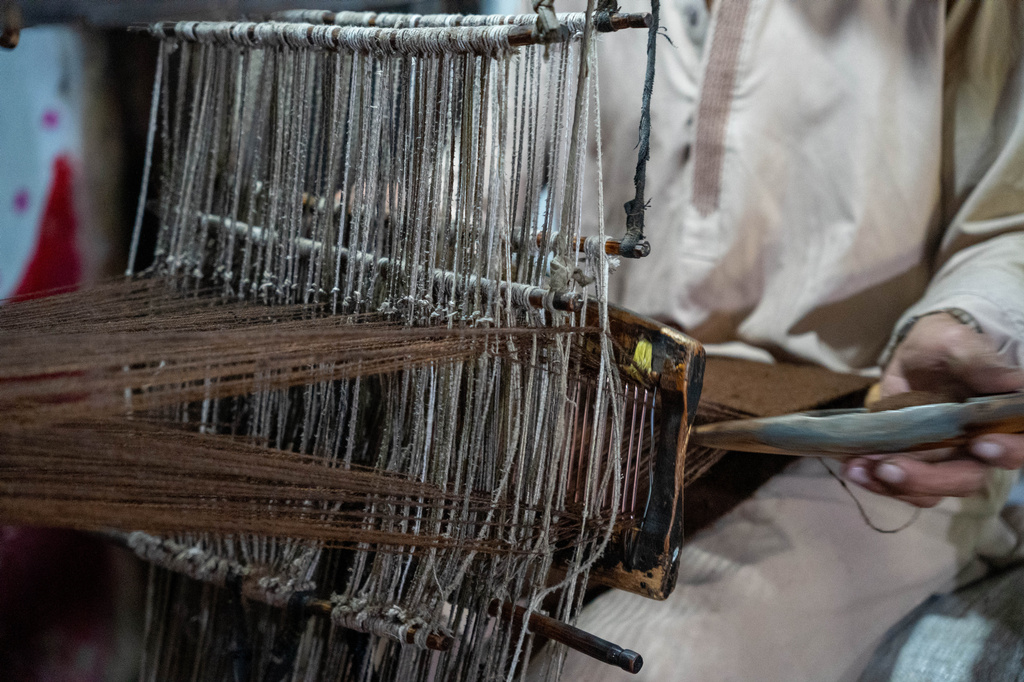For Adil Iqbal, Chitrali Shu weaving preserves the wonderful and tragic stories set in a lake in the Hindu Kush
In the cradle of the Hindu Kush, where mountains rise like guardians of the sky, stories flow as freely as the rivers that carve their way through the valleys. Among the peaks lies Shandur Lake, a high-altitude jewel that mirrors the heavens above. It’s still waters hold more than reflections; they cradle tales that bind generations, weaving folklore with the essence of life. One such tale speaks of a virgin girl, her sheep, and the mysterious journey of water that defies the eye yet nourishes the land below.
This tale begins with summer grazing, a tradition as old as the stones that pave Chitral’s rugged terrain. Families ascend to the high pastures with their flocks, finding respite in the embrace of Shandur’s meadows. One day, a young girl led her sheep to the lake. As she washed the woolly creatures in its crystalline waters, the horns of one sheep tangled in her bangles. In a tragic twist, the girl and sheep were drawn into the lake’s depths, lost to its unfathomable mystery. Years later, in Herchin village, 16 kilometres below Shandur, her wrist bone emerged from a spring, the bangle still clasped tightly, the horn still ensnared.
This story, carried by elders and whispered by the waters, is not merely a tale of sorrow. It’s a hymn to the interconnectedness of life, to the hidden pathways of water that sustain a community. The belief that Shandur’s waters emerge in Herchin speaks to an intimate knowledge of the land, a relationship forged over centuries of observation and reverence.
Craft, too, mirrors this symbiosis. Every thread of Chitrali Shu has a story woven of resilience and tradition. The hand-woven wool, crafted with care, is more than fabric; it is a repository of memory. The act of spinning and weaving connects the craftsperson not only to their ancestors but also to the land and its spirits. The virgin’s tale, intertwined with the craft of wool, reminds us that water, land, and human creativity are inextricably linked.
Across the world, these beings—whether they are dragons, naga, or mermaids—stand as guardians of balance, ensuring that water’s life-giving force is respected.
Water spirits are not bound by the boundaries of rivers or lakes; they inhabit the very essence of craft cultures. Across the world, these beings—whether they are dragons, naga, or mermaids—stand as guardians of balance, ensuring that water’s life-giving force is respected. In Chitral, the spirit of Shandur’s waters reminds us of the delicate balance between reverence and sustenance, of the stories that must be told to preserve this equilibrium.
Craft keeps these stories alive. The act of creating—whether it is weaving Shu, sculpting wood, or painting ceramics—becomes a vessel for narratives that might otherwise be lost to time. Technical skill is essential, but so is the wisdom that flows through these crafts: the understanding of seasons, of materials, and of the spirits that guide their hands.
The story of Shandur Lake and Herchin Spring is not unique in its essence, but it is singular in its resonance. It calls upon us to listen to the waters, the tales they carry, and the crafts that echo their rhythms. By keeping these stories alive, we honour not just the past but the future, ensuring that the spirits of water and life itself continue to flow freely, sustaining and inspiring all who come to their shores.
About Adil Iqbal
 Adil Iqbal is a Scottish-Pakistani cultural practitioner with 15+ years of experience working with craft communities. As an interdisciplinary artist, he explores heritage, design, and well-being through creative projects. He founded Twilling Tweeds to preserve cultural heritage through craft and co-founded the Làlgar Foundation, an NGO advocating for climate justice, linguistic diversity, and cross-cultural collaboration. Currently, Adil is leading a two-year research project documenting the endangered practice of making Chitrali Shu, a handwoven woollen cloth. This initiative, funded by the Endangered Material Knowledge Programme (EMKP) and hosted by the National Museum of Scotland, aims to safeguard this rich craft tradition for future generations. Visit www.adiliqbal.co and follow @twilling_tweeds.
Adil Iqbal is a Scottish-Pakistani cultural practitioner with 15+ years of experience working with craft communities. As an interdisciplinary artist, he explores heritage, design, and well-being through creative projects. He founded Twilling Tweeds to preserve cultural heritage through craft and co-founded the Làlgar Foundation, an NGO advocating for climate justice, linguistic diversity, and cross-cultural collaboration. Currently, Adil is leading a two-year research project documenting the endangered practice of making Chitrali Shu, a handwoven woollen cloth. This initiative, funded by the Endangered Material Knowledge Programme (EMKP) and hosted by the National Museum of Scotland, aims to safeguard this rich craft tradition for future generations. Visit www.adiliqbal.co and follow @twilling_tweeds.







Comments
Loved the story and its relevance to creative crafts worldwide.
Inspiring Adil
I well remember a vist to Shandur Lake in the 1970s so enjoyed this story
Beautifully reminded of the essential needs for keeping our making and stories vital. Thanks Adil